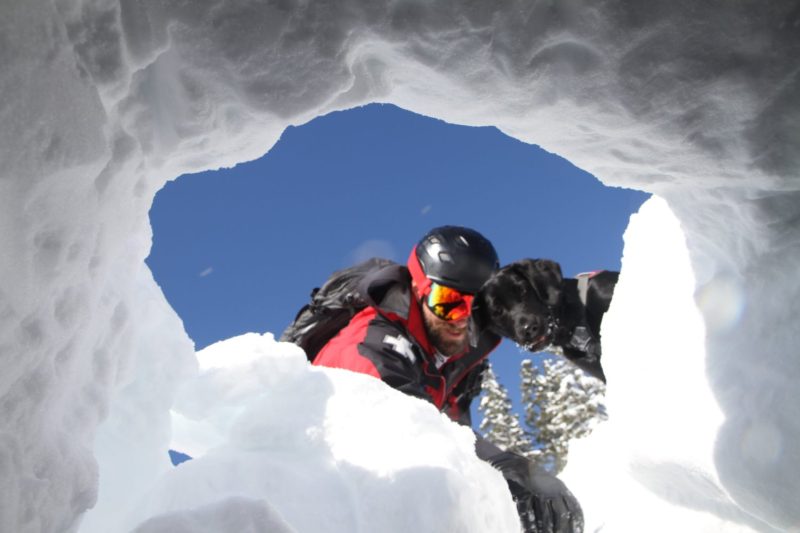
Ski patrol has been part of the ski industry from the very beginning. From ancient monks rescuing travelers in the Alps to drones joining the Aspen Mountain Rescue, the desire to keep each other safe in the mountains is tried and true.
Ski patrol today strives to keep up with the ever-changing ski industry. This had led to advanced avalanche mitigation and high standards in credentials and education. Most importantly, the creed of safety and service is never lost, past or present.
A Look Back in Time
Helping others safely navigate harsh mountain environments has existed for hundreds of years. In the early 18th century, monks were saving people from treacherous snowstorms in the Alps. Their most useful tool was with their loyal St. Bernards. The dogs would help rescue travelers after bad snowstorms. Once their excellent sense of smell and ability to find people buried in snow was discovered, canines would always be part of the industry.

The industry evolved from its historical past, and the drive to create a safe environment in the mountains continued. In 1938 the National Ski Patrol was founded in Stowe, Vermont. This organization established the education and credentialing used at 98% of U.S. ski resorts today.

Ski Patrol Today
Throughout the years, ski patrol techniques have continued to improve and advance to keep up with the ski industry. As equipment and terrain advance, so do the safety, rescue techniques, and emergency care methods.
Kevin Hickey, a long-time member of the Alpine Meadows Ski Patrol, has seen avalanche mitigation develop over the 17 years he has worked there. Since his first years at Alpine, improvements and new developments have been made to keep up with industry standards. One of the biggest developments he has noticed is the installment of their Gazex exploders. These set off a powerful explosion of air that affects large areas on the mountain.
“[Gazex] allows us to trigger avalanches via computer and set them off at times that are best suited. With explosives, ski cuts or any of these tools, we are testing stability of the snow. It does keep us out of harm’s way a little more.”
These machines have been implemented at resorts like Crystal Mountain, WA, and even by the Colorado Department of Transportation. Clearing the mountain in a matter of minutes from a dispatch hut is a huge advancement in patrol practices. The French-made system has changed the way ski patrol handles heavy snowfall.

While the methods may advance, one thing remains the same–the mission to facilitate mountain exploration. Whether you are a monk or manning an avalauncher, it takes a certain kind of someone to face the elements head-on.
“Anyone who seeks out this work, first and foremost, loves to ski, and just enjoys being in the mountain environment and out in the elements. Ultimately, it comes down to the group of people that you get to work with and learn from. The people you work alongside are the most top notch individuals you can possibly meet. So, it’s a combination of the people, the mountain environment, and the type of work that keeps you coming back year after year. You never stop learning, every day there is something to learn.” Kevin adds.





